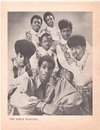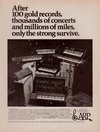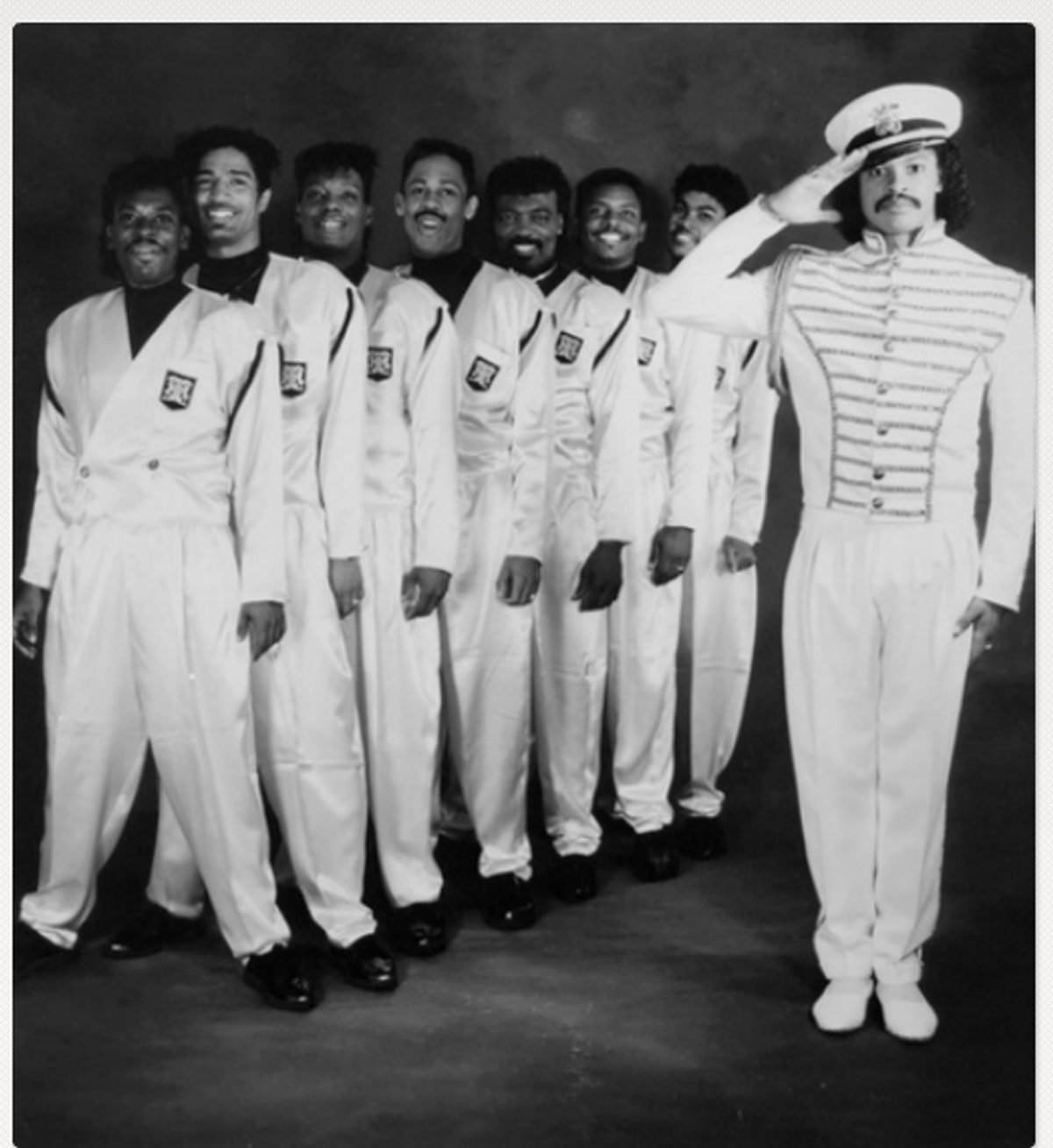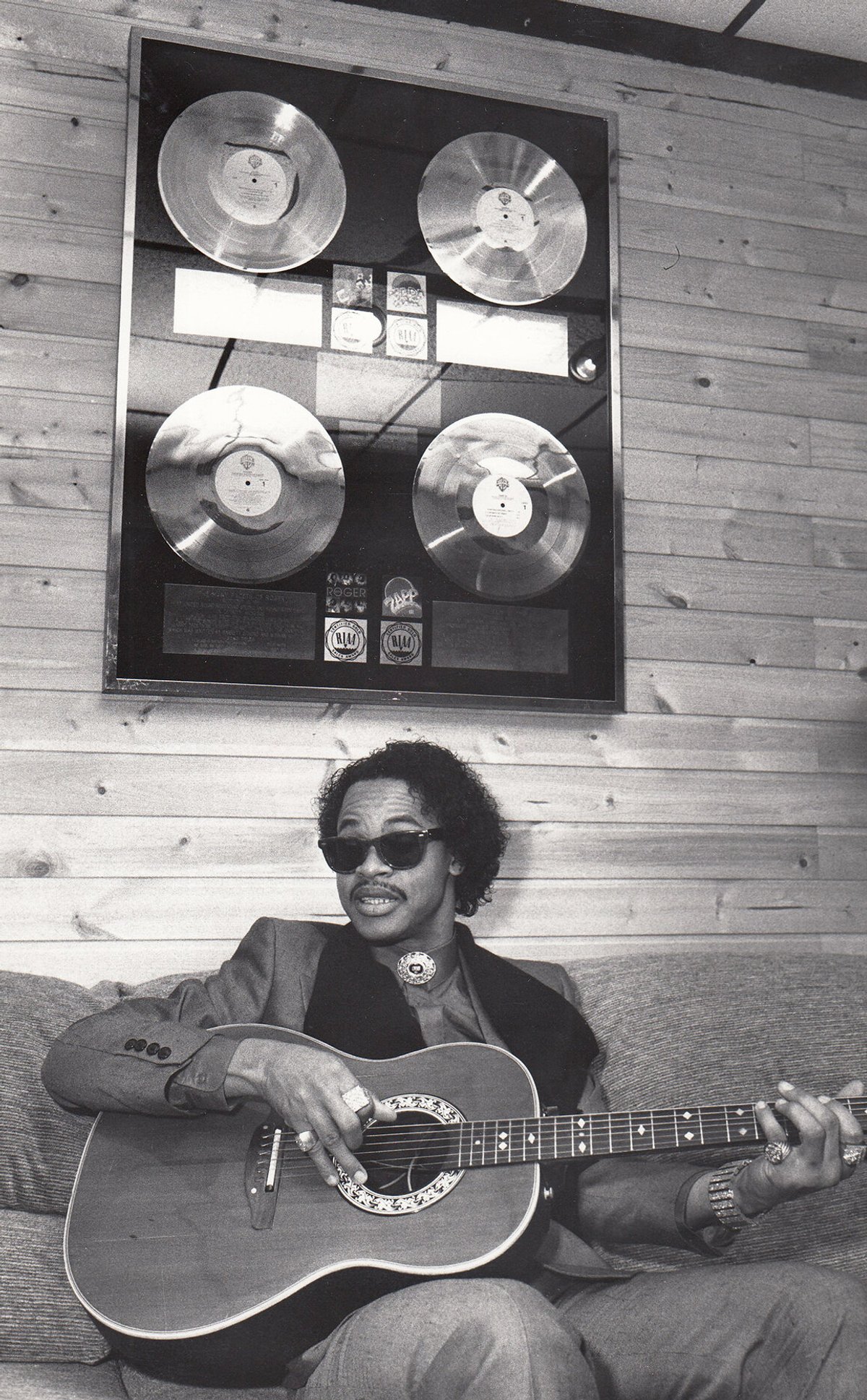






Contributor Bryndon Cook takes us to Dayton, Ohio for the next stop in our ‘Genre Sounds’ tour.
*This essay series charts the development of, late 20th century, sonic migration. With the chief focus on regional musical topography as an analogous window into the fabric of the African American experience.*
“Something in the water” became a common phrase in the Dayton, Ohio area. It is a place full of friendly bands and family bands. It is also full of folk who struck out on their own and left an even more indelible mark on music later on. Guided by the hands of unseen faces, and studio wizard prodigies predating Prince and precursing the Minneapolis explosion, Ohio may very well be the root of the modern sound we find in all of our samples today. From a deep dedication to musicianship, specifically drum and bass playing, Ohio sowed the seeds of sample based hip hop and dance music, effectively giving producers of the future the most precise and earnest slice of funk they could cut.
THE ROOT
When James Brown moved his base to Cincinnati, Ohio in 1956, he joined forces with Syd Nathan. Nathan owned King Records, an otherwise traditional record label known for midwestern country acts. Brown’s hand quickly sent some shockwaves through Cin-City and its adjacent areas when his imprint Try Me Records popped up around 1963 with a slew of radio hits and early signings like Tammi Terrell. The proximity of Black-owned music hubs like Brown’s label and Berry Gordy’s Motown, a few hours nearby, meant multitudes for surrounding communities. Not only were people now getting efficient and autonomous output by people who looked like them, but it was also the best music in the country at the time. The music scene and the record plants revealed themselves as a higher aspiration than the ever present car manufacturing culture which clouded the cities of the midwest. The children of car mechanics and church goers, an entire generation of kids were steeped in an immersive band scene that rippled out and stretched citywide through Ohio, from Cleveland to Columbus. However, no town or city met the map with this newfound feeling quite like Dayton- where a streak of unique bands would burst out of one small town and continue to construct the molding of music as we come to know it and hear it today.
THE SOUND

BOOTSY & CATFISH COLLINS with JAMES BROWN

BOOTSY & CATFISH COLLINS with JAMES BROWN
If music is truly genreless now, the sound emerging from Ohio between the late 60s and 80s stood in the middle of its hybridization. A slew of unique and talented bands including The Pacemakers and The Soul Agents, would birth an entire generation of groups which would shift the sound of recorded music. The Collins Brothers, of The Pacemakers, were picked up by James Brown and joined in their touring and recording camp. “Sex Machine”, arguably being their most notable and recognizable contribution, was also a crash course in the development of the sound to come. A heavy “bass and kick drum” syncopated focus, with a prevailing concern for melodicism and an unwavering meter: this was the first footprint from Bootsy and Catfish. Moving in slowly was George Clinton, who had migrated midwest to Detroit as a staff writer for Motown. Clinton would link up with Bootsy in the early 1970’s after Brown had retired the tender outfit. Clinton instituted two bands that encapsulated the ethos of the midwest’s open air think-tank approach to music consumption. Parliament and Funkadelic symbolized the diversity of Black American music and the fluidity of the youth consuming it in a post-Hendrix world. Clinton’s facility in the studio created a consistency of sound mixing built on bass and kick drum separation. He and Collins arranged a trinity of drums, electric bass and moog in equal standing. “Flashlight” is an example of this phenomena. An infectious groove built on Bootsy's drumming, the synchronization of his electric bass playing and Bernie Worrell’s signature Moog playing. With all of that and more standing beneath a canopy of Clinton & Parliament’s haunting gospel vocals. These were funk bible scriptures, available to any devotee as they were unique trademarks of the influence that started in Ohio.

EARLY 1970’s LINEUP OF THE OHIO PLAYERS
50 miles away and a few years earlier in Dayton, a revolving door of musicians found themselves engulfed in a group called, The Soul Agents. Marvin Pierce (trombone), Marvin Craig (bass), Tim Dozier (drummer) and Walter “Junie” Morrison (keys) among others would rotate in and out of the band, practicing top 40 and original songs in basements and eventually moving onto bigger bands like The Ohio Players. Originally The Ohio Untouchables, a shifting jazz-groove act under constant rebuilding, they stood with one album under their belt by 1969. A year later, with the retention of Junie Morrison, all of their trajectory and sonic presence would change. From 1970 to 1974, under his supervision, the band would release their first run of acclaimed work on Westbound Records: Pain, Pleasure & Ecstasy. Most if not all of the music was recorded and arranged by Morrison as jams, think-pieces, sketches and sometimes covers/interpolations. These albums introduced the Ohio Players (OP) as a jazz-gospel oriented funk band, known for its unique musicianship. It would also hold some of Morrison’s earliest and strongest contributions to modern music. Morrison’s interest and proficiency in early synthesizer technology throughout his career brought a new texture to the OP’s palette. The sophomore album, Pleasure (1972), was marked by a distinct sound from the Arp Pro Soloist: a brand new 30 patch preset, monophonic upgrade with ”after-touch” for increased sensitivity and velocity. Morrison spotlighted this keyboard on “The Funky Worm”, a #1 Hot 100 single and the first of many footnotes in the sampling history between Dayton, Ohio and The West Coast Hip Hop movement helmed by producers like Dr. Dre, DJ Quik and others. Some of Junie’s work on Westbound Records would show up again in modern secular music and Gospel through the interpolations of Kirk Franklin and samples by Kanye West/Madlib.

ARP SYNTH SERIES ADVERTISEMENT
In fact, a recently viral video from a sit down between Dave Grohl and Pharrell Williams revealed Grohl’s drumming influences to be “disco drum intros” as a primary source of inspiration in his otherwise hopeless situation. While his homage is sincere, the history runs a bit deeper. The infamous drum flam pickup that introduces Nirvana’s classic “Smells Like Teen Spirit” does in fact share roots in funk. However, those roots reach deeper than Chic or The Gap Band. While Charlie Wilson and his brothers played backup for Leon Russell in Tulsa, Oklahoma, the drum signature was being cultivated by Ohio musicians, like Bootsy Collins and Junie Morrison in particular. Here are a number of songs produced or played by Junie chronologically which feature the drum flam intro which almost all predate “Burn Rubber” by The Gap Band, as cited by Grohl:
“(Not Just) Knee Deep” (1978)
“Theme From The Black Hole” (1979)
“Love Has Taken Me Over” (1980)
“Funky Parts” (1980)
“Rappin About Rappin” (1981)
“A Taste Of Love” (1981)
Legend has it, Junie and Bootsy were practically neighbors growing up. According to Clinton, the two introspective personalities would have never met if it were not due in part to his insistent goading and matchmaking. It was however Clinton and his cohort that were in need of fresh ears from an outsider like Morrison. From 1978-1981, Junie would embark on a similar run of albums with Parliament & Funkadelic respectively as a music director both in studio and on stage, as he did for the Ohio Players years prior. Albums like One Nation Under A Groove and Uncle Jam Wants You! were massive Platinum and Gold selling hits for Funkadelic and contained huge swaths of Ohio influence. Motor Booty Affair, Gloryhallastoopid and Trombipulation went Gold and consistently charted well. Outside of Billboard, this run of albums saved the mothership from financial and creative collapse. Morrison’s presence pushed the P-Funk Mythology far beyond its bounds and added a whimsical humor, which would appear in other Ohio acts. The combination of Junie and Bernie in synth heaven and Bootsy’ omnipresence also gave Clinton a sonic leg to stand on while moving into his synth-filled ‘Atomic Dog’ era, when he would once again utilize the Ohio-born musicians as anchors in his solo career. While juggling a slew of record contracts with CBS and Columbia alike, Morrison released a trio of final solo albums: Bread Alone, 5, Techno-Freaks.
THE ROLL
In a similar fashion to the Soul Agents, younger groups like the Soul Mystics would later branch out into bigger bands. Horn-players Steve Washington (cousin of Ralph “Pee Wee” Middlebrooks from the Ohio Players) and Floyd Miller would form Slave in 1975. Their first major hit, “Slide” also showcased some very Dayton-esque sensibilities. The common use of a Schwinn Bike horn (5 seconds into “Slide”) on those songs was hallmarked as a signature of the whimsical humor unique to Dayton and normalized by people like Junie in years prior. Mark Adams (bass) played in an expressive manner which would also highlight some of this levity. His use of slides, stalls and incidentals (wiggles/shakes) would become trademark sounds not only for the Dayton area brand of funk, but for future copy-cats-to-come like Cameo. Adams had a very unique sound due in part to Washington’s production work with Jimmy Douglass. The secret sauce remains a mystery, though no doubt there is a mastery of EQ, and even an envelope filter present on Adams’ bass, giving it a metallic sheen akin to their album covers. An up-close and personal sound that made Slave distinct from other up and coming Dayton bands like: Lakeside, Heatwave and Sun.

MARK ADAMS & STEVE ARRINGTON of SLAVE

STEVE ARRINGTON and MARK ADAMS of SLAVE with NILE ROGERS and BERNARD EDWARDS of CHIC.
Making his pilgrimage back from The Bay Area, under the mentorship of The Coke Escovedo Family, a young Steve Arrington catches up with his old hometown friends who have now formed Slave. Arrington’s older brother (a member of the Soul Agents) brought him into the fold by letting him sit in on band rehearsals. Now an older seasoned percussionist and budding singer, Arrington joined a new lineup of Slave as their drummer and lead vocalist in a major leap of faith. What was to come became the next iteration in Dayton’s continuous grasp over music evolution. Arrington, much like Collins and Morrison, was a jack of all trades who moved in and out of band settings, usually providing the missing ingredient. His vocal delivery on songs like “Just A Touch of Love” was not only unique to their sound, but seemed to come out of thin air as no one else in the band could muster up a melody to fit within the slinky and narrow groove of the song. Something about Arrington’s uncanny ability as a singer to meander through his drum playing spaciously, still allowed the crucial bass element to remain integral to their output. This would return again the following year on Stone Jam with their gold hit “Watching You” , another Arrington-heavy contribution. Vocals that engaged in mimicry of horns and synthesizers imitating the both alike, became central around this music as Arrington stepped out of Slave and into his solo career. He carried this organic and seemingly formulaic approach into his first big solo hit, “Weak At The Knees” , the third single from his debut album: Hall of Fame Vol 1. Songs like “Weak..” and “Nobody Can Be You” mastered the uneven drum groove, the lock bass groove and focused melodicism that not only made Slave and Arrington successful but also highlighted what Dayton and Ohio was bringing to music beyond funk. The drum breaks from Arrington alone were sampled far and wide from N.W.A. and DJ Quik in California, Jermaine Dupri in Atlanta, A Tribe Called Quest in NYC and many others. Much like Junie and Bernie Worrell’s Arp & Moog playing, Arrington’s drumming provided the backbeat for West Coast music and East Coast music alike, moving into the 90’s and beyond. His unique vocal style also influenced the new league of New Jack Swing vocalists to come, like Keith Sweat and others.

Late 1970’s Lineup of SLAVE
THE BOUNCE

ROGER TROUTMAN & ZAPP
Another longer branch of this family tree extended out into the Troutman family band. A brand built like an institution surrounding the multi-instrumentalist, Roger Troutman. Discovered with his brothers (Larry, Lester and Terry) and signed by Clinton to Uncle Jam Records in 1979, Troutman held a house for acts like Charlie Wilson and Shirley Murdock among others who would lay the groundwork for New Jack Swing and Modern R&B vocal performers like Aaron Hall, Jodeci and Kelly Price. Roger was also a guitar player first, but an innovator of the talk box. The “talk-box” was a self-contained circuit system that allowed players to vocalize the sounds of their manipulated synth playing. By affixing a piece of plastic plexi tube to a monophonic keyboard and speaker, one could create a sound somewhere in between Junie’s ARP Soloist and the voice of Granny on “Funky Worm.” When Troutman paired this unique piece of tech with the heavy moog bass syncopation Dayton was known for, the result in dance music was groundbreaking. A third layer was Troutman’s unique guitar approach: a direct input clean sound, sometimes played on a slowed down track and replayed in varispeed for a rubbery, cat & mouse effect created a Clinton-like trinity of sound that seemed to reverberate through dancefloors all over the world. Even Michael Jackson sought Troutmans’ help behind the mixing board during sessions for his 1988 album, BAD. It is Roger’s guitar sound which cuts through on tracks like “Smooth Criminal”, not even his pioneering synth work. Like Morrison and Arrington, Troutman would continue to find another life when the sampling of his songs became the backdrop for West Coast music even up until today’s obsession with lo-fi, saturated synths and heavy bass topped with warped/chorused vocals, some of Ohio’s signature sounds to date.

ROGER TROUTMAN
The influence and the way Ohio broke into the landscape of modern music was a herculean feat. To not only be as far as it was from the major hub cities, but to be driven by local talent from smaller towns outside of Detroit, like Dayton, is a true testament to the people and places that came from there. The folk of Dayton seemed to be entrenched in a tradition of music that shaped how subsequent regional movements navigated the industry. They did it all with absolutely no roadmap or blueprint before them. Today, The Funk Music Hall of Fame now resides in Dayton, and probably no better place for it if the myth about the water turns out to be true.

